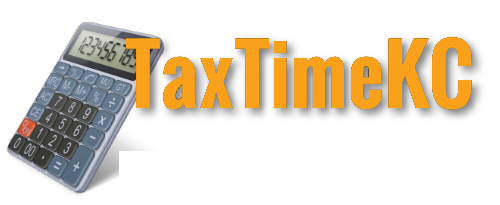
by r Hampton | Sep 11, 2019 | Tax News
IRS Tax Tip 2019-125, September 11, 2019
With school back in session, parents and students should look into tax credits that can help with the cost of higher education. They do this by reducing the amount of tax someone owes on their tax return. If the credit reduces tax to less than zero, the taxpayer may get a refund.
Taxpayers who pay for higher education in 2019 can see these tax savings when they file their tax returns next year. If taxpayers, their spouses or their dependents take post-high school coursework, they may be eligible for a tax benefit.
There are two credits available to help taxpayers offset the costs of higher education. The American opportunity tax credit and the lifetime learning credit may reduce the amount of income tax owed. Taxpayers use Form 8863, Education Credits, to claim the credits.
To be eligible to claim the American opportunity tax credit, or the lifetime learning credit, a taxpayer or a dependent must have received a Form 1098-T from an eligible educational institution.
The American opportunity tax credit is:
- Worth a maximum benefit up to $2,500 per eligible student.
- Only for the first four years at an eligible college or vocational school.
- For students pursuing a degree or other recognized education credential.
- Partially refundable. This means if the credit brings the amount of tax owed to zero, 40 percent of any remaining amount of the credit, up to $1,000, is refundable.
The lifetime learning credit is:
- Worth a maximum benefit up to $2,000 per tax return, per year, no matter how many students qualify.
- Available for all years of postsecondary education and for courses to acquire or improve job skills.
- Available for an unlimited number of tax years.
More information:
Subscribe to IRS Tax Tips
– Story provided by IRS Tax Tips

by r Hampton | Sep 10, 2019 | Tax News
IRS Tax Tip 2019-124, September 10, 2019
Tax professionals should learn the tell-tale signs that their office may have experienced a data theft. Such thefts could have resulted in fraudulent tax returns filed in their clients’ names.
Here is a list of warning signs that a tax professional or their office may have experienced a data theft:
- Their clients’ e-filed returns are rejected by the IRS or state tax agencies. This happens because someone else already filed a tax return with their client’s Social Security number.
- Clients who haven’t filed tax returns begin to receive taxpayer authentication letters from the IRS. The IRS sends letters such as the 5071C, 4883C and 5747C to confirm a taxpayer’s identity for a submitted tax return.
- Clients who haven’t filed tax returns receive refunds.
- Clients receive tax transcripts that they didn’t request.
- Clients who created an IRS Online Services account receive an IRS notice that their account was accessed.
- Clients who have an account get an IRS emails saying their account is disabled.
- Clients unexpectedly receive an IRS notice that an IRS online account was created in their names.
- The number of returns filed with the tax professional’s Electronic Filing Identification Number is higher than the number of clients they have.
- Tax professionals or clients responding to emails that the firm did not send.
- Network computers running slower than normal.
- Computer cursors moving or changing numbers when the user is not even touching the keyboard.
- Network computers locking out employees.
More information:
Subscribe to IRS Tax Tips
– Story provided by IRS Tax Tips

by r Hampton | Sep 8, 2019 | Tax News
According to the IRS, self-employed taxpayers should use the Tax Withholding Estimator when they perform their next “paycheck checkup.”
IR-2019-149 is the latest press release advertising the Tax Withholding Estimator, the agency’s newest online tool: “The estimator is an expanded, mobile-friendly online tool that replaced the Withholding Calculator, which since 2001 had offered workers an online method for checking their withholding.”
The IRS stressed that they needed to develop a new resource to help even more taxpayers manage their tax withholding: “The old calculator lacked features geared to self-employed individuals; the new estimator made changes to address this important group.”
Why Should Taxpayers Perform a Paycheck Checkup?
Tax withholding outreach was a focus of the IRS due to the implementation of the Tax Cuts and Jobs Act. As the IRS explains in Publication 5307, “the Tax Cuts and Jobs Act changed the way taxable income is calculated and reduced the tax rates on that income.” That meant “the IRS had to address and make changes to income tax withholding in response to the new law as soon as possible after it passed.”
Despite a year-long series of press releases reminding taxpayers that they might need to adjust withholding to address these changes, some tax professionals reported clients seeing surprise tax bills. Using the Tax Withholding Estimator is just one way taxpayers can avoid that problem, and accessing it is relatively easy.
How Does the New Tax Withholding Estimator Help Self-Employed Taxpayers?
The Tax Withholding Estimator helps self-employed taxpayers calculate their withholding by letting them enter information that wasn’t accepted by the old calculator: “The estimator allows a user to enter any self-employment income, including income from side gigs or the sharing economy, in addition to wages or pensions.”
Those who regularly used the old IRS Withholding Calculator will notice a number of improvements when they pull up the new Tax Withholding Estimator. Here’s the list provided by the IRS:
- Plain language throughout to improve taxpayer understanding.
- The ability to target either a tax due amount close to zero or a refund amount.
- A new progress tracker to help a user know how much more information they need to enter.
- The ability to go back and forth through the steps, correct previous entries, and skip questions that don’t apply.
- Tips and links to help the user quickly determine if they qualify for various tax credits and deductions.
- Automatic calculation of the taxable portion of any Social Security benefits.
Taxpayers concerned that they won’t pick the correct withholding form after getting the results of the estimator don’t need to worry. The IRS said that users will be given a link to the form corresponding to their entered information—Form W-4 for employees or Form W-4P for pensioners.
Source: IR-2019-149
– Story provided by TaxingSubjects.com

by r Hampton | Sep 7, 2019 | Tax News
Current Tax Tips
The most recent Tax Tips may be found on the Current Tax Tips page.
Subscribe to IRS Tax Tips to get our easy-to-read tips via email throughout the year.
Prior Year Tax Tips
Below are the web versions of Tax Tips issued from January 2011 through last month.
– Story provided by IRS Tax Tips

by r Hampton | Sep 6, 2019 | Tax News
IRS Tax Reform Tax Tip 2019-121, September 4, 2019
Millions of people have filed their 2018 tax return, making this a prime time to consider whether their tax situation came out as expected. If not, taxpayers can use their finished 2018 return and the Tax Withholding Estimator to do a Paycheck Checkup ASAP and, if needed, adjust their withholding. Having their 2018 return handy can make it easier for taxpayers to estimate deductions, credits and other amounts for 2019. Performing a Paycheck Checkup is a good idea for anyone who:
- Adjusted their withholding in 2018, especially those who did so later in the year.
- Owed additional tax when they filed their tax return this year.
- Had a refund that was larger or smaller than expected.
- Had life changes such as marriage, childbirth, adoption, buying a home or income changes.
Since most people are affected by the Tax Cuts and Jobs Act all taxpayers should check their withholding. They should do a checkup even if they did one in 2018. This especially includes taxpayers who:
- Have children and claim credits such as the Child Tax Credit.
- Have older dependents, including children age 17 or older.
- Experienced changes to itemized deductions this year.
- Itemized deductions in the past.
- Are a two-income family.
- Have two or more jobs at the same time.
- Only work part of the year.
- Have high income or a complex tax return.
This Tax Withholding Estimator works for most taxpayers. Those with more complex situations may need to use Publication 505, Tax Withholding and Estimated Tax, instead of the Tax Withholding Estimator. This includes taxpayers who owe alternative minimum tax or certain other taxes, and people with long-term capital gains or qualified dividends.
Taxpayers can use the results from the Tax Withholding Estimator to see if they need to complete a new Form W-4, Employee’s Withholding Allowance Certificate, and submit it to their employer. In some instances, the calculator may recommend they have an additional flat-dollar amount withheld each pay period. Taxpayers give this form to their employer and do not send this form to the IRS.
More information:
Subscribe to IRS Tax Tips
– Story provided by IRS Tax Tips

by r Hampton | Sep 5, 2019 | Tax News
The IRS last Friday announced that it would be waiving the penalty for using red-dyed diesel in highway vehicles in Florida until September 15. The press release came while Floridians prepared for the possibility that Hurricane Dorian would make landfall.
As of this afternoon, the now-Category 2 storm has yet to make landfall in the United States, but NPR reported that Dorian battered the Bahamas with rain and 185-mile-per-hour winds as a Category 5 over the weekend.
Despite the storm weakening over the past few days, it still represents a very real threat to residents in the Southeastern US. When the IRS announced the dyed-fuel waiver, they wanted “to minimize or prevent disruptions to the supply of fuel for diesel-powered highway vehicles.”
The IRS points out that dyed fuel is normally used for non-taxable purposes, like providing home heating and running farm equipment and government buses. According to Publication 510, Excise Taxes, a penalty—“the greater of $1,000 or $10 per gallon of the dyed diesel fuel”—comes into play if someone knowingly sells or uses dyed fuel for non-taxable purposes.
While the waiver suspends the penalty until September 15, the agency says the usual 24.4-cent-per-gallon tax on highway diesel will still apply. Other restricted fuels, however, are not covered by the waiver: “Diesel fuel with sulfur content higher than 15 parts-per-million may not be used in highway vehicles.”
The IRS ended the release by noting they would “provide additional relief as needed.”
Sources: IR-2019-148; “The Latest on Hurricane Dorian and Its Path”
– Story provided by TaxingSubjects.com






 TAXTIMEKC
TAXTIMEKC